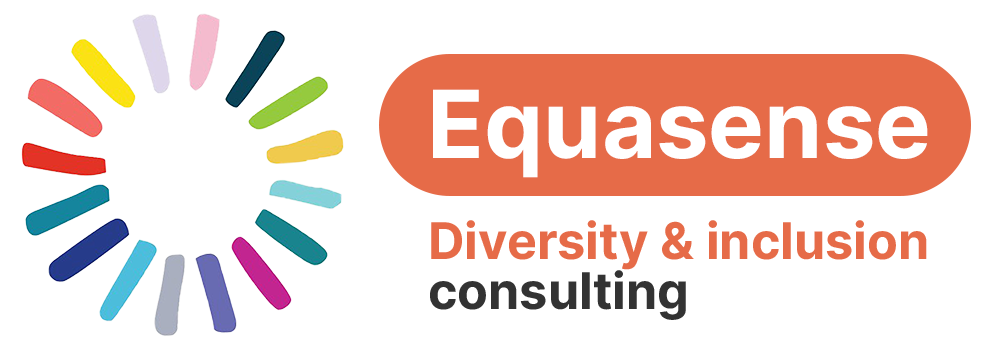One of the reasons often given for not having conversations about racism, is fear of saying “something wrong”. Concerns about language are limiting our conversations. And conversations are what we need to have to make progress in terms of race equality (and indeed building inclusive organisations in general).
It is certainly easy to feel overwhelmed by the vast array of terms used. Not only that but setting aside the few obvious words that no-one thinks are ok (the n word and “coloured”), the consensus on the best terms to use is evolving all the time. In fact, maybe the point is that hunting for a consensus is itself unhelpful – after all we are talking about words that describe people’s identities and identities are by definition individual.
Nonetheless, there are occasions when it is necessary to refer to groups of people who to some extent share a certain background or as a group are under-represented or experiencing barriers or discrimination. Much of this “labelling” is driven by the Equality Act 2010 which enshrines the duty to prevent harassment and discrimination based on a limited number of “protected characteristics”, but it is also human nature to group and label things. Necessary for survival (things that are safe to eat, people who probably won’t kill us), but unhelpful in other contexts.
Following a few webinars and conversations over the past couple of weeks, here are my latest (but always incomplete) thoughts.
“People of colour” or “BAME”?
The term “people of colour” and by extension “women of colour”, “scientists of colour” etc has been used in the US for a long time to refer to people with black or brown skin, and is increasingly being used in the UK. The UK has previously used BAME (Black, Asian and Minority Ethnicity) at least in terms of reporting and collecting data – especially in situations where white people are by far the most numerous and numbers from other ethnicities are low. Unfortunately there are several issues with both these terms, three of the most important being:
- Both “people of colour” and “BAME” group many individuals with very different experiences and cultural backgrounds together under one apparently homogenous label. When data is reported for the whole group, really important differences are hidden e.g. that educational outcomes are much worse for black students than for East Asian students for example. BAME technically can also include white minority groups such as travellers. People’s individuality is deliberately lost and devalued.
- Both terms are defined with respect to white being the norm, whilst the use of “minority” speaks to hierarchy and power as well as difference in numbers. A discussion on the use of the term minority held by Shereen Daniels and Rosemary Campbell-Stephens MBE also highlighted how it is possible (and indeed common) for people to internalise the “minority” definition and therefore be grateful for even the slightest progress in equality. This internalisation is a key part of oppression.
- Both terms are often used to avoid saying “black”. They are NOT interchangeable.
The challenge comes that if you speak to people who identify as black or brown themselves, some are ok with these terms, some are not, and some are not but are pragmatic about the possible need for some such term in certain circumstances.
My personal approach (work in progress and I definitely don’t get this right all the time) is currently as follows:
Referring to individuals – wherever possible ask how they would like to be referred to (if indeed it is even necessary or relevant to add labels – there are sometimes when this is necessary and some times when people want you to do this to emphasise this part of their identity) – or if I can’t ask, look for some examples of how this person has been referred to on previous occasions. But basically try to check first. (BTW, this is really just common politeness and applies also to pronouns and disability – there are great sensitivities here)
Referring to a group – If a study or a report talks about black people then I would also talk about black people. If a study presents data for a collated group, then I would use the same language, possibly with a caveat that acknowledges the limitations of this definition. If speaking generally and I have no other knowledge my default would probably be “people of colour” but I will always cringe inside.
Still practising/getting my head around – removing the use of “minority ethnicity” from my vocabulary. Firstly, for the negative impact of the use of “minority” and secondly because people with black or brown skin are actually the global majority (and as I write I notice that I am more comfortable writing and saying “black” than “brown” – something I need to be curious about in my journey towards allyship). “Global Majority” as coined by Rosemary Campbell-Stephens MBE, is not yet a familiar term for most people – and I have some fears that people either won’t know what I mean, or again, it is using one term to describe a lot of different people. And what about when the global majority are in the minority? I am wondering whether “under-represented Global Majority” could be a solution.
I am aware that this blog could be add to your confusion about accepted terms – it’s not meant to do so. But if we wait until the “right” word is 100% clear, we will never say anything. The key message is to use terminology and language consciously and with awareness. If you do this positively, avoid the obviously wrong, and are prepared to own and learn from the mistakes that will definitely come, then there can be no more excuses. You are ready to talk about racism. By talking you will gain understanding, confidence and new perspectives.


Recent Comments